Jun 26, 2017 | Non categorizzato
After the arrival of the “Pilgrim Cross” where the World Youth Jubilee 2019 will be held, Archbishop José Domingo Ulloa Mendieta, O.S.A., launched the initiative in which, on the 22nd day of each month “prayers will be said together” for this important event. The prayer of last 22 June was entrusted to the local Focolare communities. At the conclusion of the Mass, the Archbishop placed the “Pilgrim Cross” in the hands of the Focolare young people along with the icon of Our Lady. “It was beautiful to receive and carry the Cross of the World Youth Jubilee,” the young people wrote, “and we took the opportunity to tell the Archbishop that he could count on us; and he answered: “I do count on you. It was a celebration of the family of the Church!”
Jun 26, 2017 | Non categorizzato
In 1987 the General Assembly of the United Nations called for a World Day Against Drug Abuse and Illicit Trafficking to be observed on June 26, callinng attention to one of the worst dramas of our planet and to voice support for all the efforts to combat it. According to the 2016 Report of the United Nations Office on Drugs and Crime, 250 million people between the ages of 15 and 64 had made use of drugs in the preceding year. The campaign is aimed towards everyone, but particularly young people who often talk about the “rocking effects” of drugs while forgetting the many “negative effects”. The use of drugs is worrisome and represents a wound on society that threatens public health both in terms of prevention as well as care and treatment of the negative effects of drug use.
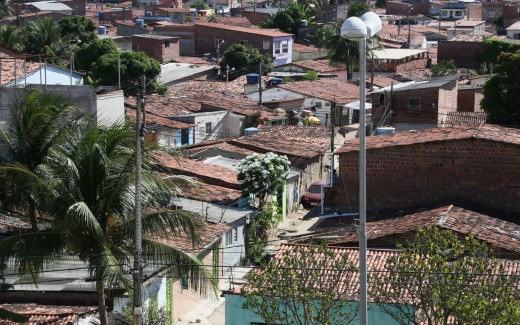
Jun 26, 2017 | Non categorizzato
 On the island of Santa Teresina “When you live in a state of extreme poverty, or you fall into inertia, or else the only alternative is violence. From the charism of unity I’ve learned that I could become an agent of social transformation in my local environment: trying to work for the local residents, helping to rebuild a mocambo, finding potable water for families. Two years later I was elected president of the St Teresina Citizens Association. I continued the work begun by my predecessors, made sure there was transparency in the public administration, making it clear that if each of us helped the other, God would help us all.” (J. – Brazil) The tax agent I’m a tax agent. It’s a difficult job that I’ve always tried to carry out as a service to the country. I tried to see and serve Jesus in every person, trying to create a relationship with each person. Several years back I was assigned to the Investigative and Executive Department. In practice, I had to convince people who were outside the law, to pay the taxes so that they wouldn’t be sanctioned. It’s quite difficult and requires a good dose of patience. Little by little I gained the respect of the people with whom I was in contact, many of whom because aware of the need and benefit of staying within the rules.” (A.N. – Kenya) Contagious solidarity “Years ago, a social worker friend had asked us to host a seventeen-year-old for a week, who was nearly blind. For various reasons he wasn’t able to stay at the Institute nor to return home with his parents. After talking it over with our boys, who were already teenagers, we decided together to say yes, even though the decision would involve a bit of sacrifice for each one of us. The house was already small for our four children, who were students and in need of space. Miriam came to stay with us and, with the help of everyone, inserted herself so well that she helped out at one of our children’s birthdays that was happening in those days. It turned out to be not only one week, but three. We remember it as one of the powerful experiences of our family. That experience of offering hospitality was still helpful many years later. Our married daughter and mother of two boys, hosted a maladjusted boy who, for Easter, would have been left alone at the Institute. Another one of our sons, now married with three boys, welcomed him for Christmas dinner, along with his mother-in-law, who was sick in the mind. Solidarity is contageous.” (H.G. Austria)
On the island of Santa Teresina “When you live in a state of extreme poverty, or you fall into inertia, or else the only alternative is violence. From the charism of unity I’ve learned that I could become an agent of social transformation in my local environment: trying to work for the local residents, helping to rebuild a mocambo, finding potable water for families. Two years later I was elected president of the St Teresina Citizens Association. I continued the work begun by my predecessors, made sure there was transparency in the public administration, making it clear that if each of us helped the other, God would help us all.” (J. – Brazil) The tax agent I’m a tax agent. It’s a difficult job that I’ve always tried to carry out as a service to the country. I tried to see and serve Jesus in every person, trying to create a relationship with each person. Several years back I was assigned to the Investigative and Executive Department. In practice, I had to convince people who were outside the law, to pay the taxes so that they wouldn’t be sanctioned. It’s quite difficult and requires a good dose of patience. Little by little I gained the respect of the people with whom I was in contact, many of whom because aware of the need and benefit of staying within the rules.” (A.N. – Kenya) Contagious solidarity “Years ago, a social worker friend had asked us to host a seventeen-year-old for a week, who was nearly blind. For various reasons he wasn’t able to stay at the Institute nor to return home with his parents. After talking it over with our boys, who were already teenagers, we decided together to say yes, even though the decision would involve a bit of sacrifice for each one of us. The house was already small for our four children, who were students and in need of space. Miriam came to stay with us and, with the help of everyone, inserted herself so well that she helped out at one of our children’s birthdays that was happening in those days. It turned out to be not only one week, but three. We remember it as one of the powerful experiences of our family. That experience of offering hospitality was still helpful many years later. Our married daughter and mother of two boys, hosted a maladjusted boy who, for Easter, would have been left alone at the Institute. Another one of our sons, now married with three boys, welcomed him for Christmas dinner, along with his mother-in-law, who was sick in the mind. Solidarity is contageous.” (H.G. Austria)
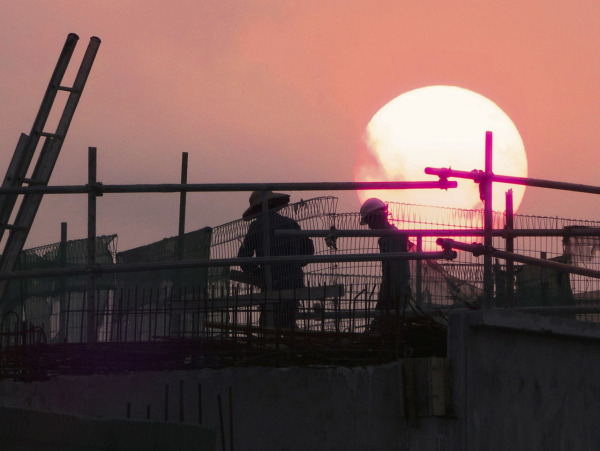
Jun 25, 2017 | Non categorizzato
 In the light of the Christian faith, humankind is shown to be the image of God. The Old Testament teaches that God made humankind in his own image and likeness. This origin in God confers upon humankind’s raggedness, woundedness and spirit a beauty that is above human. This beauty becomes even greater in Christianity, because humankind is seen not only as the image of God, but also as God’s creation and worthy of the Creator, the artwork is worthy of the artist. The Omnipotent could not but create beings worthy of Him. In humankind, He created a masterpiece that makes one dizzy to behold, bestowing upon him an admirable form to last and to generate, an intelligence to enlighten, a heart with which it could project itself on its fellow beings, a soul to evade the limits of time and space, with the angels in Eternity. Humankind fell, it’s true, abusing its freedom; but it’s also true that the most exalted prodigy of Divine Love came attached to that Fall: Redemption through the Blood of Christ. Seen in this way, humankind – albeit a poor wretch you zoom by on the sidewalk, or a native who lives miles and miles away – is such a grand being, such a noble being, such a divine being that you should want to kneel down whenever you were in its presence, to tremble and be overwhelmed, as you recognized in it the majesty of the One who imagined it and made it the prodigy of Creation, the object of the supernatural life in the life of nature. It immediately becomes clear what such a vision does in you. It makes it impossible and absurd for you to exploit human beings, to degrade them, to tamper with them, to supress them, without violating the work of God, without affecting the very patrimony of the Creator. Humankind is Son of God, and any offence against the son is an outrage to the Father: murder becomes an attempted God-killing, tantamount to killing God in effigy. Humankind barters its dignity when it bends to evil. And among the sins is the pride that is put in place of humankind’s humble gratitude at realizing it is God’s masterpiece. From pride comes exploitation, which is an antisocial impetus; whereas, Christian humility creates service and, also in this, humankind is a copy of that other Son of Man who came not to be served, but to serve. And herein comes the welding of the individual to society: its integration, its expansion. Humankind does not exist in the abstract: fathers exist, citizens exist, believers, and so on…the social animal exists. Only that human beings enters into society boosted by. Because human beings love, they come out of the shell of their egos, they expand, they integrate – in the life of the others. By the mere fact that human beings love, he and she already reveal that they are naturally Christian. Christianity then lifts up and supports this love, saying that love takes the person into society, saying that the vital principle of society is love: without which society, rather than protection, compliment and joy of the human person, becomes a constriction and a mutilation of a person. It can become a threat to human dignity. Social exploitation begins when you no longer love humanity; when you no longer respect its dignity; because you see the muscles and you don’t see the spirit. Igino Giordani, La società cristiana, (Rome: Città Nuova, 1942), 32-36.
In the light of the Christian faith, humankind is shown to be the image of God. The Old Testament teaches that God made humankind in his own image and likeness. This origin in God confers upon humankind’s raggedness, woundedness and spirit a beauty that is above human. This beauty becomes even greater in Christianity, because humankind is seen not only as the image of God, but also as God’s creation and worthy of the Creator, the artwork is worthy of the artist. The Omnipotent could not but create beings worthy of Him. In humankind, He created a masterpiece that makes one dizzy to behold, bestowing upon him an admirable form to last and to generate, an intelligence to enlighten, a heart with which it could project itself on its fellow beings, a soul to evade the limits of time and space, with the angels in Eternity. Humankind fell, it’s true, abusing its freedom; but it’s also true that the most exalted prodigy of Divine Love came attached to that Fall: Redemption through the Blood of Christ. Seen in this way, humankind – albeit a poor wretch you zoom by on the sidewalk, or a native who lives miles and miles away – is such a grand being, such a noble being, such a divine being that you should want to kneel down whenever you were in its presence, to tremble and be overwhelmed, as you recognized in it the majesty of the One who imagined it and made it the prodigy of Creation, the object of the supernatural life in the life of nature. It immediately becomes clear what such a vision does in you. It makes it impossible and absurd for you to exploit human beings, to degrade them, to tamper with them, to supress them, without violating the work of God, without affecting the very patrimony of the Creator. Humankind is Son of God, and any offence against the son is an outrage to the Father: murder becomes an attempted God-killing, tantamount to killing God in effigy. Humankind barters its dignity when it bends to evil. And among the sins is the pride that is put in place of humankind’s humble gratitude at realizing it is God’s masterpiece. From pride comes exploitation, which is an antisocial impetus; whereas, Christian humility creates service and, also in this, humankind is a copy of that other Son of Man who came not to be served, but to serve. And herein comes the welding of the individual to society: its integration, its expansion. Humankind does not exist in the abstract: fathers exist, citizens exist, believers, and so on…the social animal exists. Only that human beings enters into society boosted by. Because human beings love, they come out of the shell of their egos, they expand, they integrate – in the life of the others. By the mere fact that human beings love, he and she already reveal that they are naturally Christian. Christianity then lifts up and supports this love, saying that love takes the person into society, saying that the vital principle of society is love: without which society, rather than protection, compliment and joy of the human person, becomes a constriction and a mutilation of a person. It can become a threat to human dignity. Social exploitation begins when you no longer love humanity; when you no longer respect its dignity; because you see the muscles and you don’t see the spirit. Igino Giordani, La società cristiana, (Rome: Città Nuova, 1942), 32-36.
Jun 24, 2017 | Non categorizzato
Today, 24 June, marks the end of the Ramadan, the period of 29 or 30 days during which the Muslims recall «the month in which the Koran was revealed as a guide for humanity and which is a clear proof of the right way and salvation» (Koran, Sura II, verse185). During this period, fasting from dawn to sunset constitutes the fourth of the five pillars of Islam. The spiritual meaning of fasting accompanied by prayer and meditation, sexual abstinence and renunciation in general, according to many theologians, refers to the capacity of man to self-discipline himself, exercising patience and humility and remembering to help the more needy and those who are less fortunate. Ramadan is, therefore, a sort of exercise in purity against all worldly passions, the benefits of which will fall on the faithful all year round.
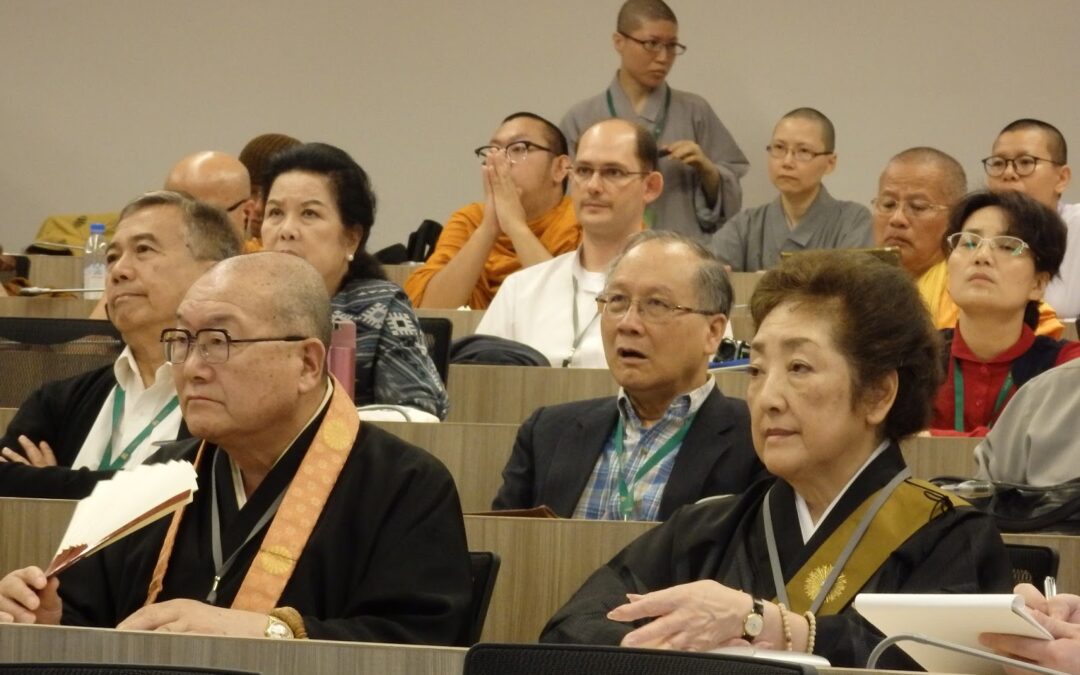
Jun 24, 2017 | Focolare Worldwide
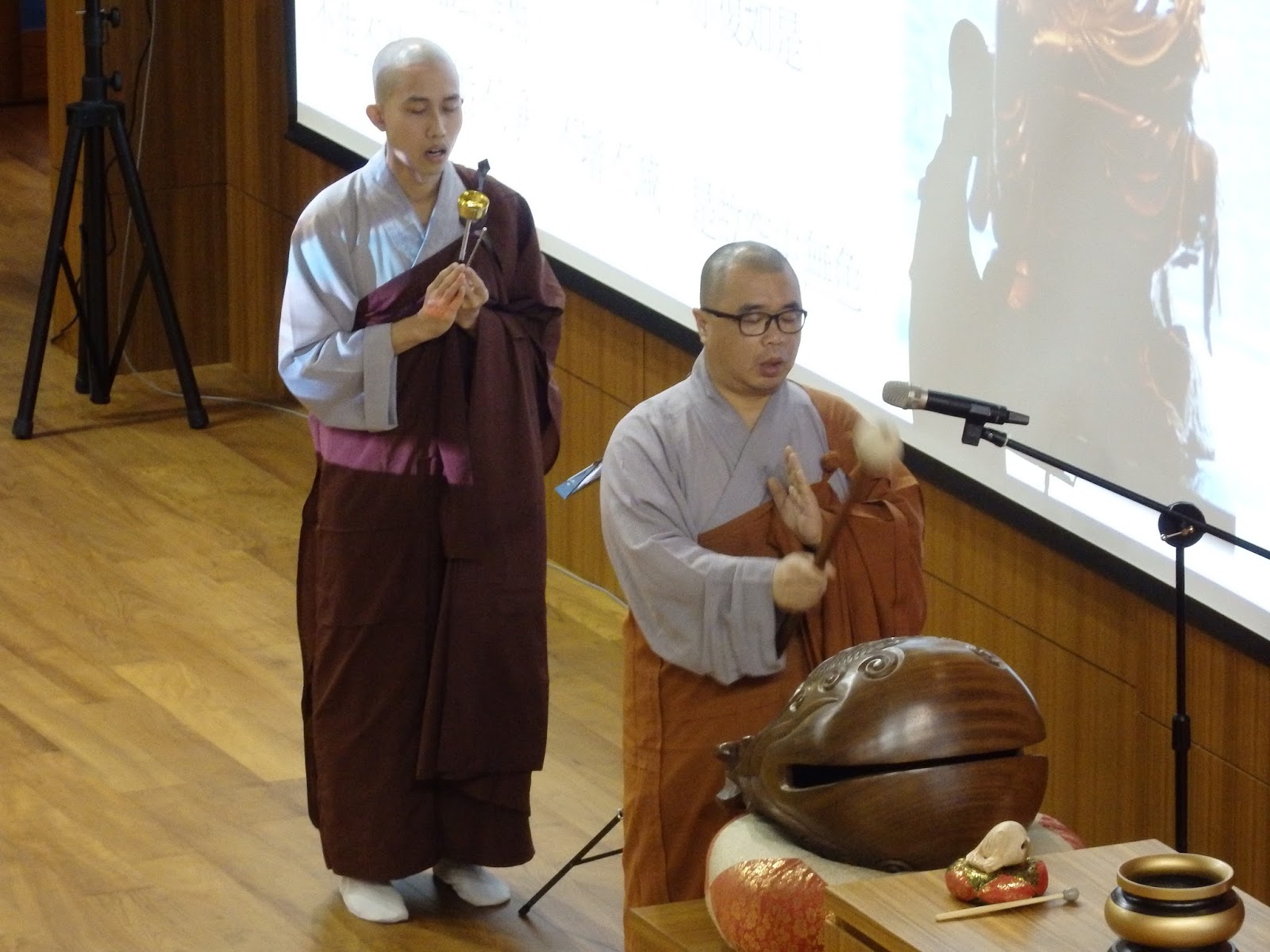 We reached Dharma Drum last night at dusk, where we were welcomed with exquisite kindness by young volunteers who helped us to get settled in our rooms. Then there was dinner and greetings. The symposium began the next morning. The conference hall and the entire building that holds the College of Liberal Arts is modern, built by a Japanese architect with elevated gardens to ensure a pleasant climate even during the hot rainy season, despite the humidity seeming to dominate all year long. The food they offer us is completely vegetarian and at a high culinary level, the expression of a delicate and attentive welcome that helps us feel at home.
We reached Dharma Drum last night at dusk, where we were welcomed with exquisite kindness by young volunteers who helped us to get settled in our rooms. Then there was dinner and greetings. The symposium began the next morning. The conference hall and the entire building that holds the College of Liberal Arts is modern, built by a Japanese architect with elevated gardens to ensure a pleasant climate even during the hot rainy season, despite the humidity seeming to dominate all year long. The food they offer us is completely vegetarian and at a high culinary level, the expression of a delicate and attentive welcome that helps us feel at home. 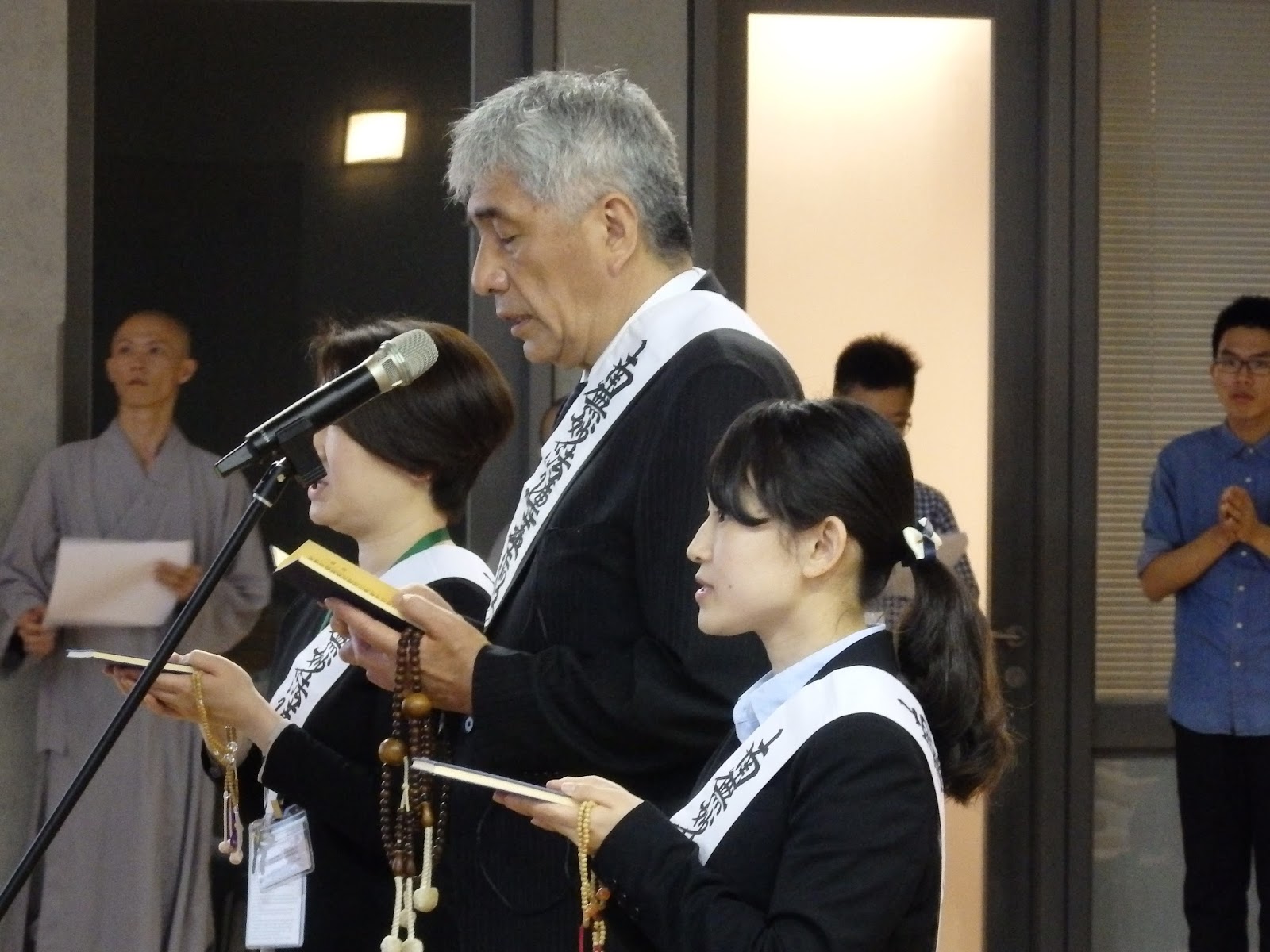 The opening ceremony begins at 10am. One of the members of the teaching faculty, Guohuei Shih, presents the professors there. Father Giuseppe Silvestrini, the official representative of the Vatican, greets the group, followed by Rita Moussalem and Roberto Catalano, co-directors of the Focolare’s Center for Interreligious Dialogue. There are about 70 of us from the U.S. Europe, Thailand, Korea, Japan, Philippines, China and Taiwan – both Buddhists from different traditions and Catholics. There are Theravada monks and laypeople from Thailand, Mahayana Buddhists from Japan who represent ancient schools such as Nichiren-Shu, Tendai-Shu and more recent movements such as the Rissho Kosei-kai. There is a lot of warmth between everyone present, including those who have brought their young followers. These are relationships that have been established through the years. After the opening ceremony, there was a visit to the huge complex, which brought the various groups to different parts of Dharma Drum Mountain. Visiting the museum of Master Sheng Yen, the founder of Dharma Drum and reformer of Chan Buddhism, was particularly meaningful. In the afternoon we continued by touring the various halls, where images of the Buddha are venerated. There was an especially interesting lesson on how to venerate the Enlightened One. The Theravada monks humbly learned from the same tradition that the young monks do there at that university.
The opening ceremony begins at 10am. One of the members of the teaching faculty, Guohuei Shih, presents the professors there. Father Giuseppe Silvestrini, the official representative of the Vatican, greets the group, followed by Rita Moussalem and Roberto Catalano, co-directors of the Focolare’s Center for Interreligious Dialogue. There are about 70 of us from the U.S. Europe, Thailand, Korea, Japan, Philippines, China and Taiwan – both Buddhists from different traditions and Catholics. There are Theravada monks and laypeople from Thailand, Mahayana Buddhists from Japan who represent ancient schools such as Nichiren-Shu, Tendai-Shu and more recent movements such as the Rissho Kosei-kai. There is a lot of warmth between everyone present, including those who have brought their young followers. These are relationships that have been established through the years. After the opening ceremony, there was a visit to the huge complex, which brought the various groups to different parts of Dharma Drum Mountain. Visiting the museum of Master Sheng Yen, the founder of Dharma Drum and reformer of Chan Buddhism, was particularly meaningful. In the afternoon we continued by touring the various halls, where images of the Buddha are venerated. There was an especially interesting lesson on how to venerate the Enlightened One. The Theravada monks humbly learned from the same tradition that the young monks do there at that university. 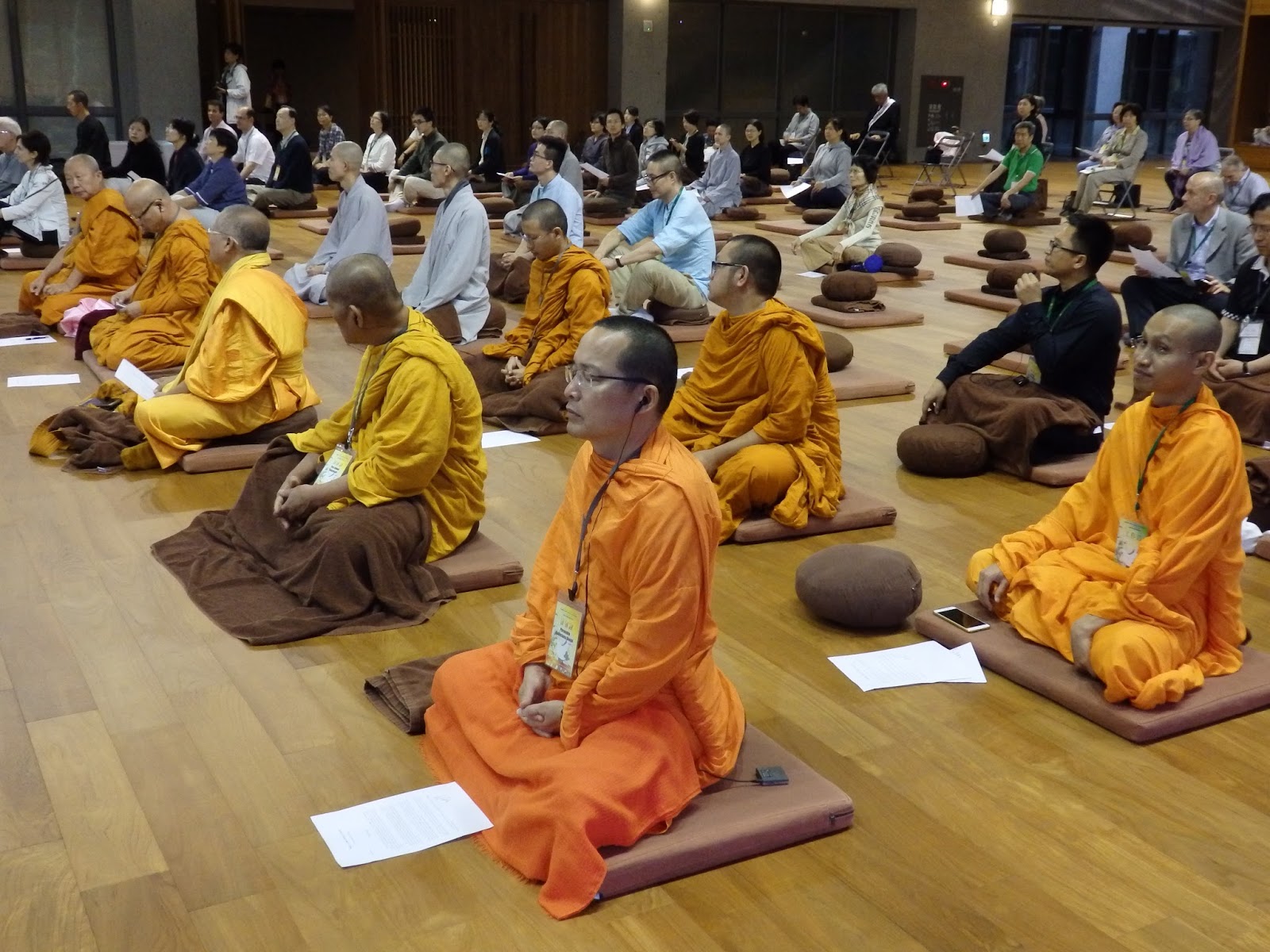 The most beautiful moment of the day is called “blessing time”: a long moment of prayer where each person prays according to their tradition – a moment of solemnness, respect and silence. In the hall dedicated to Buddha, where Christians that morning had celebrated mass, we spend an hour-and-a-half in a string of prayers. The Theravada monks begin and the Christians follow. Following them, there are the members of the Rissho Kosei-kai and Tendai-Shu, finishing with the Fo Gu Shan monks. Time seems to stop, and we feel greatly enriched in our hearts. It feels as if we are touching humanity’s infinite yearning and need to reach the absolute, especially faced with the immense problems of suffering and war. As we leave we feel closer to each other, despite having had the part of the program where our differences surfaced the most. There is a spirit of communion and mutual respect that brings us closer during every part of the program. In the days that follow, work continues so that we continually grow to know each other better with a rapport of friendship and true fraternity. We speak about suffering, with speeches on the personal and social dimension of suffering, presented by Christians, Theravada Buddhists from Thailand, Mahayana Buddhists, the Rissho Kosei-kai, Tendai-Shu and Won Buddhism from Korea. There are also workshops in parallel where the presenters discuss religion and psychology, dialogue and social action, experiences of dialogue in a variety of contexts, and mediation and dialogue, with a particular emphasis on Vipassana mediation. Three experts conclude the program with some reflections on the content that emerged during this work.
The most beautiful moment of the day is called “blessing time”: a long moment of prayer where each person prays according to their tradition – a moment of solemnness, respect and silence. In the hall dedicated to Buddha, where Christians that morning had celebrated mass, we spend an hour-and-a-half in a string of prayers. The Theravada monks begin and the Christians follow. Following them, there are the members of the Rissho Kosei-kai and Tendai-Shu, finishing with the Fo Gu Shan monks. Time seems to stop, and we feel greatly enriched in our hearts. It feels as if we are touching humanity’s infinite yearning and need to reach the absolute, especially faced with the immense problems of suffering and war. As we leave we feel closer to each other, despite having had the part of the program where our differences surfaced the most. There is a spirit of communion and mutual respect that brings us closer during every part of the program. In the days that follow, work continues so that we continually grow to know each other better with a rapport of friendship and true fraternity. We speak about suffering, with speeches on the personal and social dimension of suffering, presented by Christians, Theravada Buddhists from Thailand, Mahayana Buddhists, the Rissho Kosei-kai, Tendai-Shu and Won Buddhism from Korea. There are also workshops in parallel where the presenters discuss religion and psychology, dialogue and social action, experiences of dialogue in a variety of contexts, and mediation and dialogue, with a particular emphasis on Vipassana mediation. Three experts conclude the program with some reflections on the content that emerged during this work. 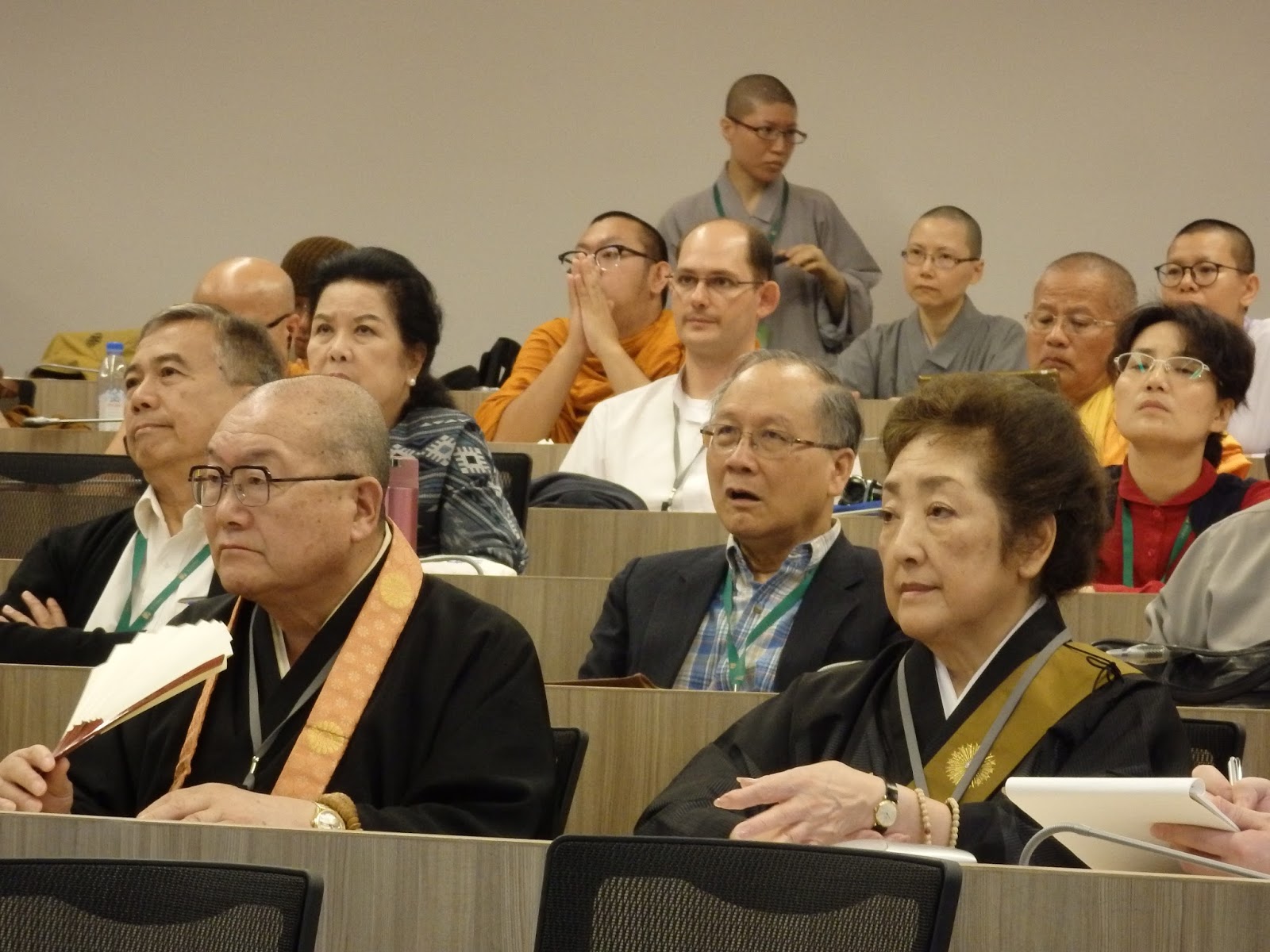 Beyond all this, what counts most is the atmosphere that was created. The head of the Dharma Institute of Liberal Arts, Rev. Huimin Bikshu, confides that this is the first meeting of its kind at the university. Besides those signed up as participants, there are also monks and nuns from the Dharma Drum Monastery and students of the college. The day is marked by a great spiritual and existential commitment. The dialogue allows us to emphasize what we have in common, despite there being great differences between the traditions. There are experiences that put up bridges of dialogue that bring hope, as Rev. Nisyoka from the Japanese Tendai-Shu affirms. The conclusion of the work happens in the afternoon, organized by Providence University, an academic institution located at Thien Chu. There we talk about economics, the environment and interreligious dialogue. The results from this week of common experience, reflection and spiritual friendship are difficult to convey. They are part of each of the participants’ souls. Perhaps what was said by a young Japanese monk, the abbot of a temple in his country, explains the depth of the experience best. “Rarely in life have I perceived the intimate presence of God-Buddha as I have in these days at our symposium in Taiwan… I have studied in Christian schools and I always thought that Christianity was a religion that happens in church (rites and religious services). During the symposium in Taiwan I understood that Christianity, instead, is the religion of the presence of God among people.” By Roberto Catalano Read Part I
Beyond all this, what counts most is the atmosphere that was created. The head of the Dharma Institute of Liberal Arts, Rev. Huimin Bikshu, confides that this is the first meeting of its kind at the university. Besides those signed up as participants, there are also monks and nuns from the Dharma Drum Monastery and students of the college. The day is marked by a great spiritual and existential commitment. The dialogue allows us to emphasize what we have in common, despite there being great differences between the traditions. There are experiences that put up bridges of dialogue that bring hope, as Rev. Nisyoka from the Japanese Tendai-Shu affirms. The conclusion of the work happens in the afternoon, organized by Providence University, an academic institution located at Thien Chu. There we talk about economics, the environment and interreligious dialogue. The results from this week of common experience, reflection and spiritual friendship are difficult to convey. They are part of each of the participants’ souls. Perhaps what was said by a young Japanese monk, the abbot of a temple in his country, explains the depth of the experience best. “Rarely in life have I perceived the intimate presence of God-Buddha as I have in these days at our symposium in Taiwan… I have studied in Christian schools and I always thought that Christianity was a religion that happens in church (rites and religious services). During the symposium in Taiwan I understood that Christianity, instead, is the religion of the presence of God among people.” By Roberto Catalano Read Part I
Jun 23, 2017 | Non categorizzato
115 parliamentarians of the Interparliamentary Assembly on Orthodoxy (I.A.O.) are expected to attend the 24th General Assembly, hosted on 26 and 27 June 2017 by the Italian Parliament in Montecitorio. They are representative of parliaments in 46 countries across 5 continents. The delegations include participants from Cyprus, Georgia, Greece, Kazakhstan, the Russian Federation, Syria and Hungary. The assembly will start with a visit on Sunday, 25 June to the Byzantine monastery of San Nilo in Grottaferrata (Rome), followed by a meeting of the IAO International Bureau with Maria Voce, President of the Focolare, at the International Centre in Rocca di Papa (Rome). See press release
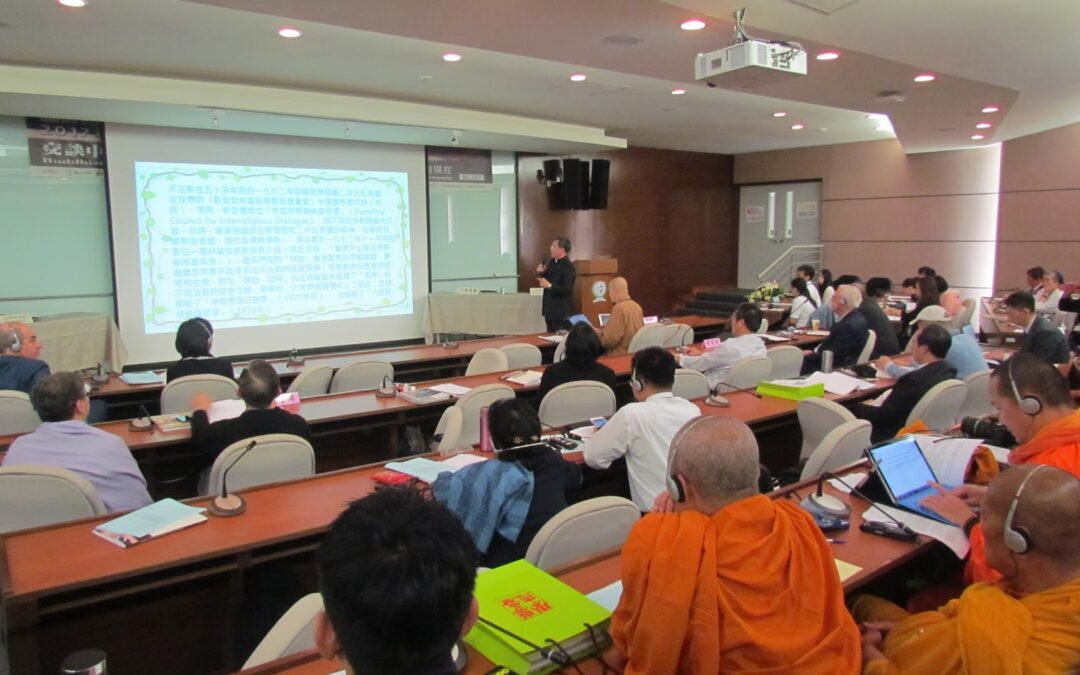
Jun 23, 2017 | Non categorizzato
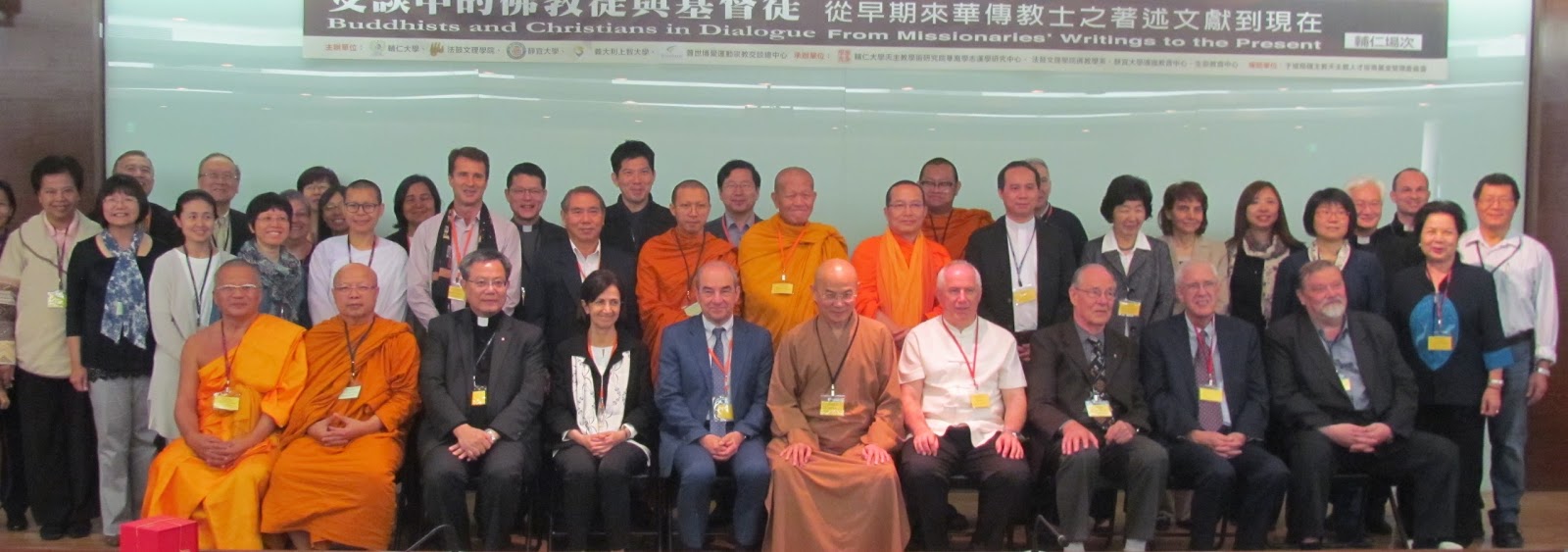 The event featured a new format punctuated by three distinct elements, the venue and religious context of a pilgrimage of dialogue, a common journey, which is an image dear to the Pope Francis who often invites us to walk together across the vast landscape of interreligious dialogue. Part one of the event was held at Fu Jen University, which is the most prestigious Catholic university on the island. The title of the event was inviting: Buddhists and Christians in Dialogue: from the writings of the missionaries to interreligious dialogue. It provoked reflection on how much has changed in the world of the religions from when the first missionaries arrived in the East at the start of the fifteenth century until today when we are working on one of the fundamental needs of humankind: dialogue between people who believe, whatever their faith may be.
The event featured a new format punctuated by three distinct elements, the venue and religious context of a pilgrimage of dialogue, a common journey, which is an image dear to the Pope Francis who often invites us to walk together across the vast landscape of interreligious dialogue. Part one of the event was held at Fu Jen University, which is the most prestigious Catholic university on the island. The title of the event was inviting: Buddhists and Christians in Dialogue: from the writings of the missionaries to interreligious dialogue. It provoked reflection on how much has changed in the world of the religions from when the first missionaries arrived in the East at the start of the fifteenth century until today when we are working on one of the fundamental needs of humankind: dialogue between people who believe, whatever their faith may be. 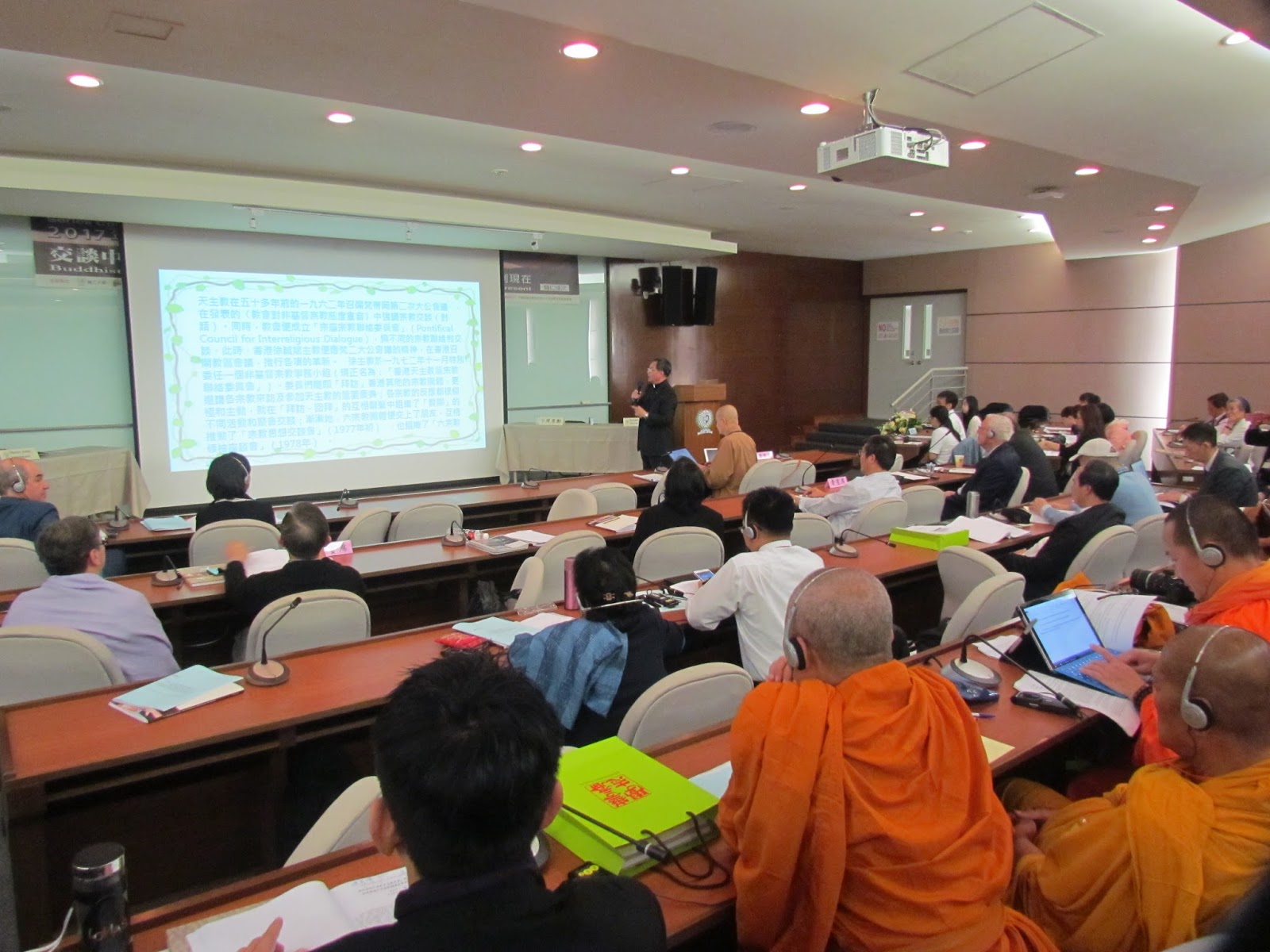 The day of reflection was co-organized by the Catholic University of Taiwan, by Sophia University Institute and the Focolare Centre for Interreligious Dialogue, and by Dharma Drum Mountain Buddhist Monastery and University, one of the renewal centres of Chan Buddhism of China. Seventy of the attendees were experts in the field: a large number of Theravada monks, Buddhist and Catholic lay people from Thailand, a group from Taiwan, the president of the Dharma Drum Institute for Liberal Arts, along with people from the academic world. The topics raised much interest. The presentations that regarded the writings of the missionaries were from between the fourteenth and nineteenth centuries. But the nerve centre of the reflection was Matteo Ricci, the great Jesuit apostle of Christianity in this part of the world, a master of that art of adapting that allowed him to reach the soul of the Chinese people. Yet, precisely Ricci was the centre of interest for his anything but accommodating position towards Buddhism, which he and many of his contemporaries saw as a hodgepodge of rites and pagan manifestations. The missionaries from the fifteenth to twentieth century were anything but open to the followers of Buddha and, in their debates, were set on showing who the followers of the true God and true religion were. The workshops also examined the critical position of the followers of Buddha towards Christians. It came into evidence how such sentiments were quite mutual. This historic context, for which we Christians cannot deny the need for an adequate examination of conscience for the errors committed and discriminatory actions, highlighted the positive value of the experience of the past sixty years. Today, dialogue is soaring with relationships of mutual trust and esteem, even though there are still points that always need to be kept clear and eventually defend against in order to preserve precise identity and avoid syncretism. Over the course of the workshop sessions concrete experiences of dialogue were shared from Hong Kong, Korea, Thailand, Philippines – and new actors were proposed, such as ecclesial movements and protagonists that are recognized pioneers of an experience of dialogue that then followed the tracks they had set. The example of spiritual friendship between Chiara Lubich and Nikkyo Niwano, the respective founders of the Focolare Movement and of the Rissho Kosei Kai, demonstrated how renewal movements that have become part of several religions for a century now, have become vehicles of encounter and friendship among people from different cultures and communities. These two sentiments marked the work of the first day of the symposium/pilgrimage in a serene examination of the journey accomplished over the centuries, opening to the hope for a future of reciprocal sharing and collaboration regarding the great challenges of the human race: social justice, the environment and peace. (To be continued) By Roberto Catalano
The day of reflection was co-organized by the Catholic University of Taiwan, by Sophia University Institute and the Focolare Centre for Interreligious Dialogue, and by Dharma Drum Mountain Buddhist Monastery and University, one of the renewal centres of Chan Buddhism of China. Seventy of the attendees were experts in the field: a large number of Theravada monks, Buddhist and Catholic lay people from Thailand, a group from Taiwan, the president of the Dharma Drum Institute for Liberal Arts, along with people from the academic world. The topics raised much interest. The presentations that regarded the writings of the missionaries were from between the fourteenth and nineteenth centuries. But the nerve centre of the reflection was Matteo Ricci, the great Jesuit apostle of Christianity in this part of the world, a master of that art of adapting that allowed him to reach the soul of the Chinese people. Yet, precisely Ricci was the centre of interest for his anything but accommodating position towards Buddhism, which he and many of his contemporaries saw as a hodgepodge of rites and pagan manifestations. The missionaries from the fifteenth to twentieth century were anything but open to the followers of Buddha and, in their debates, were set on showing who the followers of the true God and true religion were. The workshops also examined the critical position of the followers of Buddha towards Christians. It came into evidence how such sentiments were quite mutual. This historic context, for which we Christians cannot deny the need for an adequate examination of conscience for the errors committed and discriminatory actions, highlighted the positive value of the experience of the past sixty years. Today, dialogue is soaring with relationships of mutual trust and esteem, even though there are still points that always need to be kept clear and eventually defend against in order to preserve precise identity and avoid syncretism. Over the course of the workshop sessions concrete experiences of dialogue were shared from Hong Kong, Korea, Thailand, Philippines – and new actors were proposed, such as ecclesial movements and protagonists that are recognized pioneers of an experience of dialogue that then followed the tracks they had set. The example of spiritual friendship between Chiara Lubich and Nikkyo Niwano, the respective founders of the Focolare Movement and of the Rissho Kosei Kai, demonstrated how renewal movements that have become part of several religions for a century now, have become vehicles of encounter and friendship among people from different cultures and communities. These two sentiments marked the work of the first day of the symposium/pilgrimage in a serene examination of the journey accomplished over the centuries, opening to the hope for a future of reciprocal sharing and collaboration regarding the great challenges of the human race: social justice, the environment and peace. (To be continued) By Roberto Catalano
Jun 22, 2017 | Focolare Worldwide
Listening to one another.This was the spirit with which Gabriela Melo and Augusto Parody of the Focolare International Centre set out on their journey to visit the many communities of the Movement diffused in Latin America. They even reached Esmeraldas in Ecuador, on the Pacific Coast, populated mostly by Afro-Ecuadorians, and where the crystalline blue of the sky merges with that of the sea, making the luxuriant vegetation shine like an emerald. This enchanting landscape changes suddenly the minute you enter the town, and especially the view ends with the conglomerations of bamboo and galvanized iron huts in the poor districts like Isla Bonita, Pampon, and Puerto Limon.. The hordes of children play on the streets and on the beach from morning till night, and if they are not saved on time as adolescents and teenagers, they become drug or alcohol addicts, involved in “pandillerism” (the infamous metropolitan gangs of marauders). The spirituality of unity reached Esmeraldas over 30 years ago, and took root precisely among the Afro-Ecuadorian population of families, youths, priests and children who have made the evangelical news of mutual love the law of their lives. It is a ray of spirituality that has lighted up new hope, putting into action new ideas and forces. And this is what happened around Fr. Silvino Mina, who is also part of the community. Through the Ayudav group that formed in his parish he was able to solve many urgent cases of street children and teens, giving rise to the need of reinforcing these aid actions, also by calling the attention of the Institutions. This was how the Fundación Amiga (1992) was born, and with it, a school for kids at risk, with the aim of making their lives more dignified and helping them to face the future through suitable educational programmes. By focusing on their great sportive talents (Esmeraldas is infact known as the cradle of Ecuadorian athletes), they formed a soccer school, and also handicraft laboratories run by the former street youths themselves. «Today, the school has1,700 children and adolescents from 13 to 19 years of age – Don Silvino explained – and with global educational projects, where one tries to put into practice what one learns, the whole educational community of students, teachers and parents is involved. All the children are offered a good meal a day, which for many is the only meal they can afford, together with vaccinations, medical treatments and education on health and Aids prevention. We also study the Afro culture and traditions, and not only these.» Ecuador, in fact, is a crossroad of millenary cultures (Quito was one of the two ancient capitals of the Incas) where they spoke various Amerinde languages (Quechua, Shuar, Tsafiki and others). The government’s endeavour precisely aims to recover local communities, cultures and religious expressions, to establish a dialogue which valorises their diversities in an enriching intercultural experience. This term appears at least eleven times in the new Constitution approved in 2008.«And if we added the socio-political demands–Gabriela and Augusto observed – we could also highlight what is happening in Esmeraldas, the commitment to live the Gospel, and the building of communities where the different ethnic, linguistic and religious components trigger a daily process of integration which is spreading quickly. This is a process which benefits the big intercultural workshop which is Eduador, a country that can really offer the world a unique and sustainable model of encounter and coexistence.»
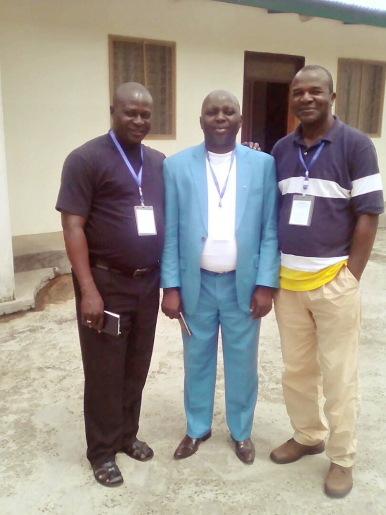
Jun 21, 2017 | Focolare Worldwide
 “Even if it is not officially declared, also here we are fighting the ‘third piecemeal war’. The transitional government is trying to rebuild what the recent civil war has demolished, but has to contend with the strife that often breaks out into fratricide struggles.” Martial Agouais a Catholic priest of the Central African Republic, a country where the majority are Christians and 15% are Muslims. In the absence of a national defense body, the UN sent the peacekeepers, called the “blue helmets”, of some foreign contingents, but there are many interests at stake. The perpetration of the guerilla paradoxically acts also as a cover for foreign hoarders, greedy forthe country’s precious mineral resources. Enemy hunts are always ongoing, and often are fatally found in the tribe right in front, or in the village which practices another religion. The recent news reported about a Catholic bishop, Bishop Juan José Aguirre Muñoz who opened his parish in Tokoyo to host 2,000 Muslims under the attack of the anti-Balaka, also called Christian militias, originally formed as a sort of self-defence groups of the Islamic Seleka gangs, but which lately have often become terrorist groups. This has made no difference between the violent groups who had triggered the revolt, and the civil Muslims, peace-loving people of merchants and the Peul tribe (nomadic cattlemen, also called Mbororo). “My parish,” recounted Fr Martial, “dedicated to the Holy Family, is in Sibut, the capital of the KemoInbingu region. Here in Sibut a meeting of all the authorities was held recently, from the prefect to the mayor, the tribe chiefs of the Munisca force to the district chiefs of the Burundi contingent, and the ex-Selekato the anti-Balaka. At a certain point the chief of the anti-Balakaspoke up to say in a loud voice that the pastors of the various churches, priests, religious men and women must no longer speak about social issues in the churches. All were scared and nobody dared to contradict him. Also I didn’t speak, but that threat did not stop my Christian commitment. I had learned from the spirituality of the Focolare that we have to love everyone, and be concerned about the rights of all. And I said to myself, if I have to choosewhat side to take, I will always choose to stand by the weaker people, the most defenceless.” Two days later, the Peuls were attacked by the anti-Balakain the forest where they were pasturing their cattle, at 18 km along the Bangui axis. Four men were killed and seven among the women and children were wounded. The Munisca brought the wounded to the central hospital of Sibut, but for two days they did not receive any treatment or food. Everyone was afraid to approach them to help them, including the NGOs and the humanitarian services. “When I found out about the situation,” the priest explained, “I took courage and went to the chief of the anti-Balakato ask him to accompany me to the hospital. Upon seeing those wounded Muslims left to themselves in a room with an unbearable smell and in pitiful conditions, both of us were moved to tears. I ran to some Christian families living close to the hospital to ask for water for drinking and to wash them, and also food. I then obtained from the diocesan Caritas director, a means of transport that would bring them to Bangui, 200 km away. Thank God, in three weeks all of them were healed and the Caritas was able to bring them home to their families safe and sound.” Abbé Martial Agoua – Sibut (R.C.A.)
“Even if it is not officially declared, also here we are fighting the ‘third piecemeal war’. The transitional government is trying to rebuild what the recent civil war has demolished, but has to contend with the strife that often breaks out into fratricide struggles.” Martial Agouais a Catholic priest of the Central African Republic, a country where the majority are Christians and 15% are Muslims. In the absence of a national defense body, the UN sent the peacekeepers, called the “blue helmets”, of some foreign contingents, but there are many interests at stake. The perpetration of the guerilla paradoxically acts also as a cover for foreign hoarders, greedy forthe country’s precious mineral resources. Enemy hunts are always ongoing, and often are fatally found in the tribe right in front, or in the village which practices another religion. The recent news reported about a Catholic bishop, Bishop Juan José Aguirre Muñoz who opened his parish in Tokoyo to host 2,000 Muslims under the attack of the anti-Balaka, also called Christian militias, originally formed as a sort of self-defence groups of the Islamic Seleka gangs, but which lately have often become terrorist groups. This has made no difference between the violent groups who had triggered the revolt, and the civil Muslims, peace-loving people of merchants and the Peul tribe (nomadic cattlemen, also called Mbororo). “My parish,” recounted Fr Martial, “dedicated to the Holy Family, is in Sibut, the capital of the KemoInbingu region. Here in Sibut a meeting of all the authorities was held recently, from the prefect to the mayor, the tribe chiefs of the Munisca force to the district chiefs of the Burundi contingent, and the ex-Selekato the anti-Balaka. At a certain point the chief of the anti-Balakaspoke up to say in a loud voice that the pastors of the various churches, priests, religious men and women must no longer speak about social issues in the churches. All were scared and nobody dared to contradict him. Also I didn’t speak, but that threat did not stop my Christian commitment. I had learned from the spirituality of the Focolare that we have to love everyone, and be concerned about the rights of all. And I said to myself, if I have to choosewhat side to take, I will always choose to stand by the weaker people, the most defenceless.” Two days later, the Peuls were attacked by the anti-Balakain the forest where they were pasturing their cattle, at 18 km along the Bangui axis. Four men were killed and seven among the women and children were wounded. The Munisca brought the wounded to the central hospital of Sibut, but for two days they did not receive any treatment or food. Everyone was afraid to approach them to help them, including the NGOs and the humanitarian services. “When I found out about the situation,” the priest explained, “I took courage and went to the chief of the anti-Balakato ask him to accompany me to the hospital. Upon seeing those wounded Muslims left to themselves in a room with an unbearable smell and in pitiful conditions, both of us were moved to tears. I ran to some Christian families living close to the hospital to ask for water for drinking and to wash them, and also food. I then obtained from the diocesan Caritas director, a means of transport that would bring them to Bangui, 200 km away. Thank God, in three weeks all of them were healed and the Caritas was able to bring them home to their families safe and sound.” Abbé Martial Agoua – Sibut (R.C.A.)







 Beyond all this, what counts most is the atmosphere that was created. The head of the Dharma Institute of Liberal Arts, Rev. Huimin Bikshu, confides that this is the first meeting of its kind at the university. Besides those signed up as participants, there are also monks and nuns from the Dharma Drum Monastery and students of the college. The day is marked by a great spiritual and existential commitment. The dialogue allows us to emphasize what we have in common, despite there being great differences between the traditions. There are experiences that put up bridges of dialogue that bring hope, as Rev. Nisyoka from the Japanese Tendai-Shu affirms. The conclusion of the work happens in the afternoon, organized by Providence University, an academic institution located at Thien Chu. There we talk about economics, the environment and interreligious dialogue. The results from this week of common experience, reflection and spiritual friendship are difficult to convey. They are part of each of the participants’ souls. Perhaps what was said by a young Japanese monk, the abbot of a temple in his country, explains the depth of the experience best. “Rarely in life have I perceived the intimate presence of God-Buddha as I have in these days at our symposium in Taiwan… I have studied in Christian schools and I always thought that Christianity was a religion that happens in church (rites and religious services). During the symposium in Taiwan I understood that Christianity, instead, is the religion of the presence of God among people.” By Roberto Catalano
Beyond all this, what counts most is the atmosphere that was created. The head of the Dharma Institute of Liberal Arts, Rev. Huimin Bikshu, confides that this is the first meeting of its kind at the university. Besides those signed up as participants, there are also monks and nuns from the Dharma Drum Monastery and students of the college. The day is marked by a great spiritual and existential commitment. The dialogue allows us to emphasize what we have in common, despite there being great differences between the traditions. There are experiences that put up bridges of dialogue that bring hope, as Rev. Nisyoka from the Japanese Tendai-Shu affirms. The conclusion of the work happens in the afternoon, organized by Providence University, an academic institution located at Thien Chu. There we talk about economics, the environment and interreligious dialogue. The results from this week of common experience, reflection and spiritual friendship are difficult to convey. They are part of each of the participants’ souls. Perhaps what was said by a young Japanese monk, the abbot of a temple in his country, explains the depth of the experience best. “Rarely in life have I perceived the intimate presence of God-Buddha as I have in these days at our symposium in Taiwan… I have studied in Christian schools and I always thought that Christianity was a religion that happens in church (rites and religious services). During the symposium in Taiwan I understood that Christianity, instead, is the religion of the presence of God among people.” By Roberto Catalano 


